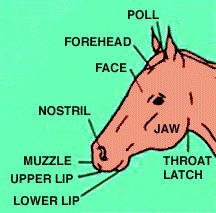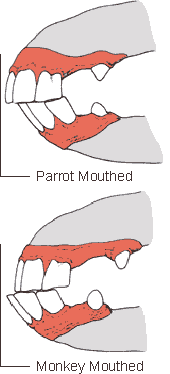Ashley Griffin, University of Kentucky
A few breeds have certain characteristics that help define breed character and type, but for most breeds, attractive, well-conformed heads have the same characteristics.

These characteristics include:
- short, well-set ears
- large, bold eyes
- short distance from eye to muzzle
- large nostrils
- refined muzzle with a shallow mouth
- sex characteristics (stallion, mare)
- breed characteristics.
In general there is no physiological benefit to horses having a pretty head. Ugly-headed horses are able to function and perform just as well as pretty-headed horses. However, most people would prefer to own a pretty-headed horse as opposed to an ugly one. So, head selection is pretty much based upon beauty.
Characteristics that make an attractive head include: placement of ears, shape of the eye, size of the nostrils, depth of mouth, and overall proportionality. The ears should be proportional to the horse’s head; however, placement of the ears on top of the head can vary. The ears should sit squarely on top of the head, point forward, and have an attractive, alert appearance. Some horses have ears that turn inward, some have ears that turn outward, and others have ears that sit down on the side of the head. Any deviation in proper placement or carriage detracts from the appearance of the head.
The eyes should be set on the corners of the head to help provide a 300-degree range of vision. Large, soft eyes usually indicate a quiet, docile disposition. A small pigeye is usually indicative of a horse that is sullen and difficult to train. The horse with excessive white around the eye is very often nervous and flighty. A quality eye should be bright, tranquil, and have a soft, kind expression.
Horses with bold, bright eyes set wide apart and on the corners of their forehead in combination with a slightly concave appearance from eye to the muzzle (dish face), will have increased depth perception and lateral vision. These horses appear to be more trainable because they are less apprehensive about their surroundings.
Horses with small pigeyes set close together rather than on the corners of the forehead and with a convex shape from the eyes to the muzzle (Roman nose) have limited vision. They are typically more apprehensive of their surroundings and are not as trainable.
Pay close attention to a horse’s head because you will be able to recognize breed and quality and, possibly, predict disposition.

The horse should have a well-defined jaw. Stallions will have a slightly larger, deeper, more defined jaw than mares, indicative of secondary sex characteristics. A gelding will typically have a jaw intermediate in size.
It is important to examine the mouth of the horse to ensure that the horse is not parrot- mouthed (overshot muzzle) or monkey-mouthed (undershot muzzle). The depth and shape of the mouth is an indication of the “lightness” of a horse’s mouth. Typically, the more shallow the mouth, the softer and more responsive a horse is to the bit.


